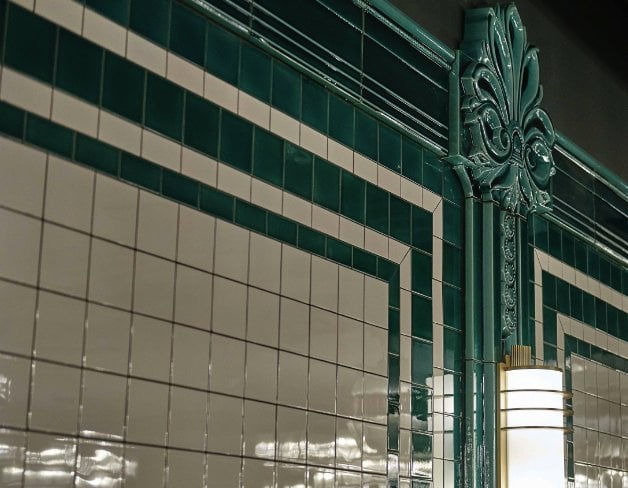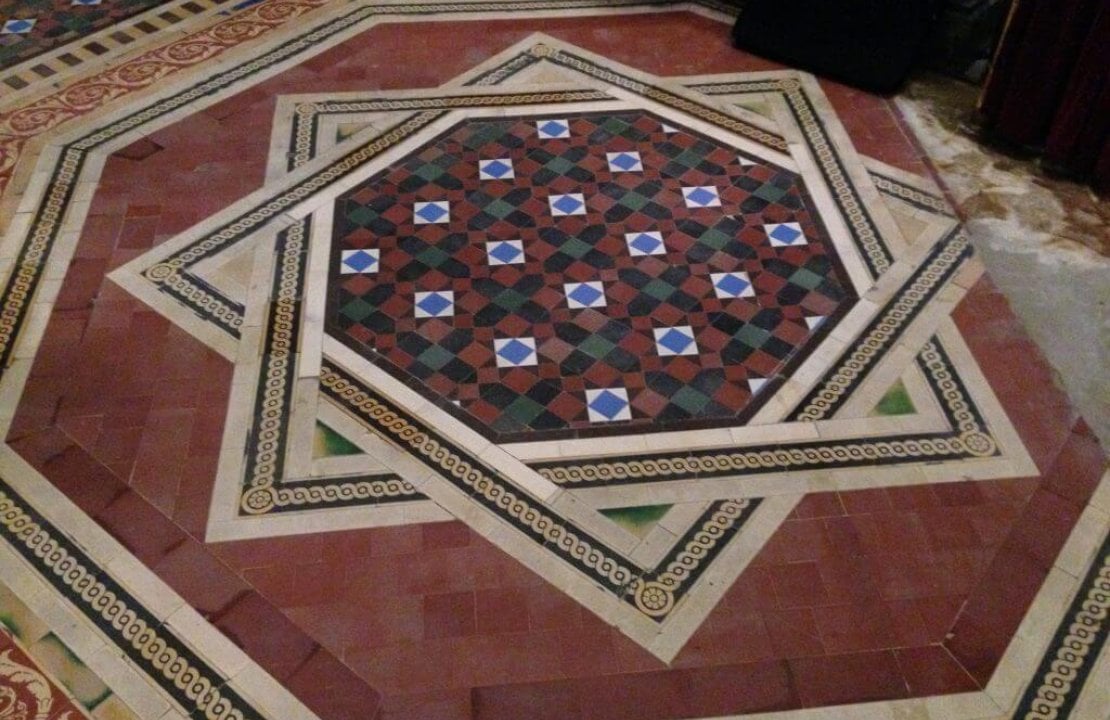We get a lot of calls from customers who have had the good fortune to purchase a Victorian house with a wealth of period features including some original tiles on floors and walls. The Victorians typically tiled a wealth of their house’s surfaces including hallway floors with intricate and colourful patterned designs sometimes incorporating encaustic tiles; porch floors and walls tiles to encompass skirting, dado and feature tiles in eye catching designs; bathroom and kitchen walls in much plainer hues of off white, and garden paths, often in black and white chequerboard tile designs with a border.

So if you have purchased a Victorian house ripe for renovation, it is likely that some of these tiles may remain and unlikely that they are all in perfect condition after 150 years. Therefore there are choices to be made – you can:
A) restore what is there and replace any missing or damaged tiles
B) replace what is there with the same style of tiles to avoid sourcing issues
C) replace what is there with something completely different
In our opinion option A) should always be the preferred route because original features should be embraced rather than ripped out, and usually good replacements for damaged or missing tiles can usually be sourced. However if more tiles are damaged than not damaged, option B will cost you less and be easier than replacing lots of individual tiles. Options B) and C) will however allow you to put a proper cement base and damp proof membrane underneath your new tiled floor and bring the area up to modern building standards.
Is the method the same for cleaning a tiled floor or tiled wall?
Yes it is. Firstly once you have swept and vacuumed the floor, clean up the tiles with a weak solution of washing up liquid and hot water using a mop and maybe a scrubbing brush for any stubborn stains. Once the floor has dried, remove any other debris such as glue with a spirit based solvent and scraper where necessary. Again allow to dry. Then inspect your tiles and identify any broken, chipped or missing tiles. Take a photograph and list all of the missing tiles, their colours, dimensions and quantities you need to source and email this list with pictures to sales@thevictorianemporium.com. We will then be able to provide a quotation for replacement of these missing tiles. We will advise if we are unable to provide any of the tiles and will suggest alternatives. Order tile samples (from the website) in order to ensure that the tiles, especially in terms of colours, are a close match.
You will need to note that any new tiles produced may vary slightly in colour compared to your original tiles as your original tiles are likely to be 150 years old with all the wear and tear and fading that age entails. Place your order in if you are happy to go ahead.
Whilst you are waiting for the tiles to be produced, remove the broken tiles by gently trying to prise them out with a scraper or hook. If this fails you could try smashing up any individual tiles gently with a hammer being careful not to touch or damage any neighbouring tiles and then removing the debris and the floor/wall adhesive.
How do you clean Victorian tiles?
Victorian tiles are easily cleaned by firstly sweeping, then vacuuming up any surface debris. Tiles should then be mopped with a weak solution of washing up liquid in hot water.
Encaustic tiles with their bright patterns have their own specific needs due to their increased porosity as they are not a single colour throughout like other floor tiles. The pigments in these tiles, as natural oxides, are applied whilst the clay mixture is still in a semi-liquid state and harden into the tile surface. Liquids are quickly absorbed into unsealed Encaustic tiles and without protection they will easily stain. Therefore these should always be sealed before being installed using a suitable product.
For any ongoing maintenance needs for your Victorian wall and floor tiles, LTP offer a superb range of products for restoring and caring for old tiles. http://www.ltp-online.co.uk/cat/intensive-cleaners

Posted by Julie - Jul 13, 2021 - 08:40
Hello
We have bought an old house and have a large tile project in the hallway to undertake. Would it be better to apply something before applying a tile grout to avoid staining?
Should we grout before cleaning or clean before grouting,
Thanks